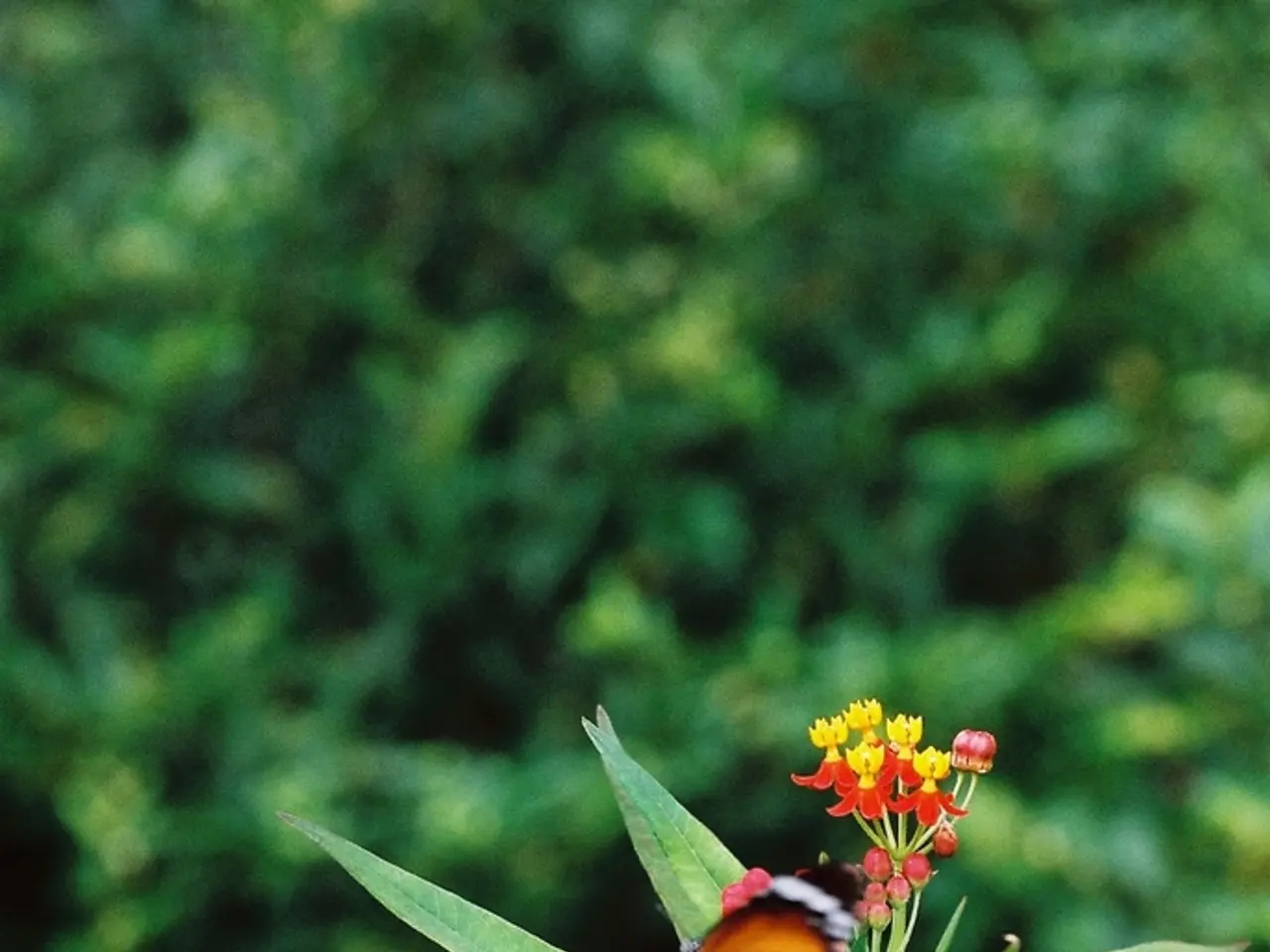Butterfly-Friendly Plants: A Compilation of 10 Flora Known to Entice Butterflies
In recent years, the decline in butterfly populations has been a cause for concern. One way to help reverse this trend is by creating a butterfly garden. Not only is this an easy and rewarding project, but it also offers visual beauty and a sense of peace and tranquility. Here's a guide to help you get started.
Butterflies thrive in gardens that are rich in nectar-rich flowers and larval host plants. To create a butterfly-friendly garden, focus on planting a variety of flowers that bloom across seasons to provide continual food sources. Avoid pesticides and create suitable microhabitats like south-facing slopes and windbreaks.
Some top plants known to attract butterflies effectively include:
- Salvia, with hardy, drought-tolerant purple and blue spires, is highly attractive for butterflies and hummingbirds.
- Verbena bonariensis, which attracts a wide range of pollinators, including butterflies.
- Catnip (Nepeta), a perennial with late spring to fall blooms and soft silvery foliage, is favored by butterflies.
- Marigolds, with their bright and cheerful orange, red, or yellow blooms, are particularly attractive to butterflies.
- Beebalm (Monarda) attracts butterflies and other pollinators with its nectar-rich blooms.
- Echinacea (Coneflower) supports butterflies through summer and fall with its nectar and long bloom time.
- Common Sage (Salvia officinalis) appeals to butterflies and bees with its aromatic flowers.
- Dogsbane is known as a larval food and nectar source for certain butterfly species.
- Oregano blooms that attract butterflies and beneficial insects are easy to grow.
- Glossy Abelia ('Kaleidoscope') is a small fragrant shrub with white flowers that draw butterflies.
In addition to these plants, there are some gardening tips to keep in mind:
- Plant large clumps of larval host plants together to support caterpillars.
- Provide year-round blooms, with plants that flower early spring through late fall to ensure a steady nectar supply.
- Use peat-free compost and avoid pesticides to protect butterflies and their habitats.
- Choose a south-facing garden site (Northern Hemisphere) to maximize sunlight, aiding butterflies' thermoregulation.
- Incorporate native shrubs and trees like spicebush and pawpaw as windbreaks and host plants to shelter butterflies.
By combining these plants and practices, your garden will offer food, shelter, and breeding sites for butterflies, fostering a vibrant lepidopteran-friendly environment. So, why not give it a try and create your own butterfly garden today?
Some other plants worth mentioning include Lantana Camara, a fragrant plant that blooms year-round and has vibrant flowers, making it a butterfly magnet. Wedelia, a tropical flowering plant that produces vibrant yellow flowers, attracts butterflies with ease. Zinnia plants bloom for months and attract butterflies, while Cockscomb, or Celosia, is a stunning plant with vibrant, fire-like blooms that attract butterflies.
Lastly, providing shelter from strong winds can help butterflies thrive in windy areas. So, consider incorporating windbreaks into your garden design to create a welcoming haven for these beautiful creatures.
- To enhance a butterfly garden, consider planting organic nutrients like compost to enrich the soil, providing a more nurturing environment for the plants.
- In your home-and-garden lifestyle, include buying organic seeds from a local nursery to support sustainable gardening practices and ensure healthier plants for your garden.
- When caring for your butterfly garden, aim to create a diverse ecosystem by preserving native plants and encouraging natural pollinators, such as bees and butterflies.
- In your butterfly garden, you might consider incorporating a water feature, like a birdbath or a shallow pond, to offer drinking and bathing opportunities for butterflies.
- To elevate your gardening experience and support the butterfly population, you could also consider growing your own caterpillar food plants, such as milkweed, inside a Netcup in your home before transplanting them to your garden.



